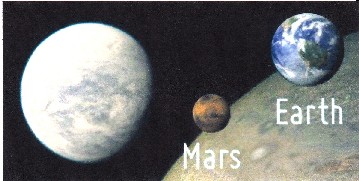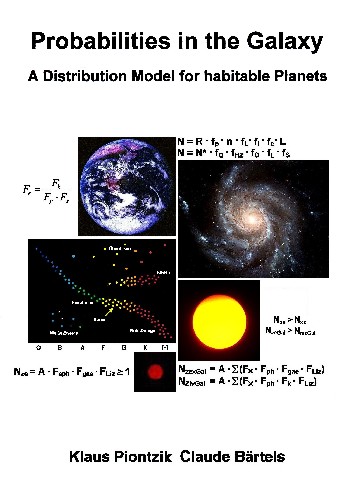 |
Superearths
are planets with at least four times the earth's
mass. Most of the superearths are in a range of 4
to 20 earth masses.
However, there are also specimens of up to 40
earth masses. Most of the superearths are about
the size of the earth or at most twice as large. |
According to the "Habitable
Exoplanets Catalog" of September 2015, 21 of 31
habitable planets are so-called superearths.
This corresponds to a share of 67.741 %. The probability
factor is therefore Fhsup = 0.677,419 = 21:31.
According to the "Habitable Exoplanets Catalog" of December
2017, 30 of 53 habitable planets are superearths. This
corresponds to a share of 56.603 %. The probability
factor is therefore Fhsup = 0.566,037 = 30:53.
If you calculate the mean value from both information,
you get:
| |
Fhsupm = 0.621,723 ± 0.055
Fhsupm = 2,043:3,286 |
| |
|
| 2.3.1 Theorem |
62.172%
of all habitable planets, in solar-like star
systems, are probably superearth. |
Then, from equation 1.6.1 for solar-like star systems
that have habitable planets, a relationship for
superearth can also be derived.
Related to all star systems A in our galaxy, the number Nhsup of the G-star systems, with habitable
super-earths, results to:
| 2.3.2 Equation |
Nhsup = Nh · Fhsup
Nhsup = A · Fsph · Fhsup |
Starting point are 100-300 billion solar systems in the
galaxy. Insert into equation 2.3.2:
| 2.3.3 Theorem |
There
could be 4.144 to 12.434 million habitable
superearths in solar-like star systems, in our
galaxy. |
The probability for habitable superearths in solar-like
star systems, in the galaxy, is then:
| 2.3.4 Definition |
Fsup = Fsph · Fhsup |
Fsup = 1:15,000 · 2,043:3,286
Fsup = 0.000,041,449 = 1:24,126
Among about 24,126 sun-like star
systems, one exists, with a superearth.
In principle, there is no reason why simple life, in the
form of flora, can also develop on superearth. However,
because of the high gravity, it is doubtful whether
intelligence and civilization can really develop on such
planets. More likely are civilizations on approximately
earth-great planets and approximately earth-like planets.
From the existing catalogue data, two further
probabilities can be extracted for planets that can be
used as life carriers, namely for approximately
earth-great planets and approximately
earth-like planets.
|
